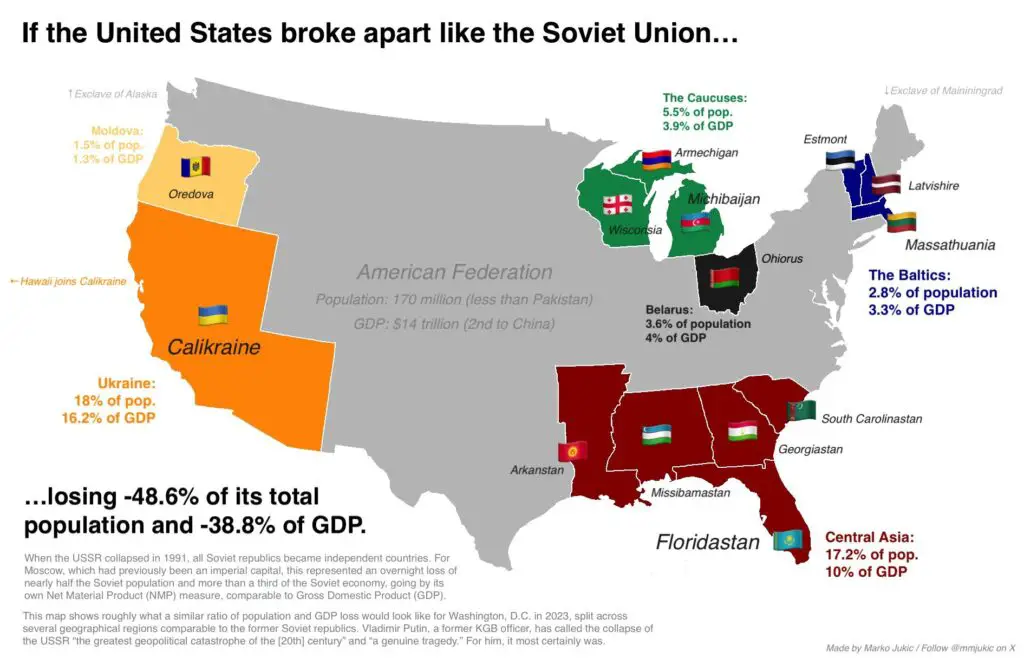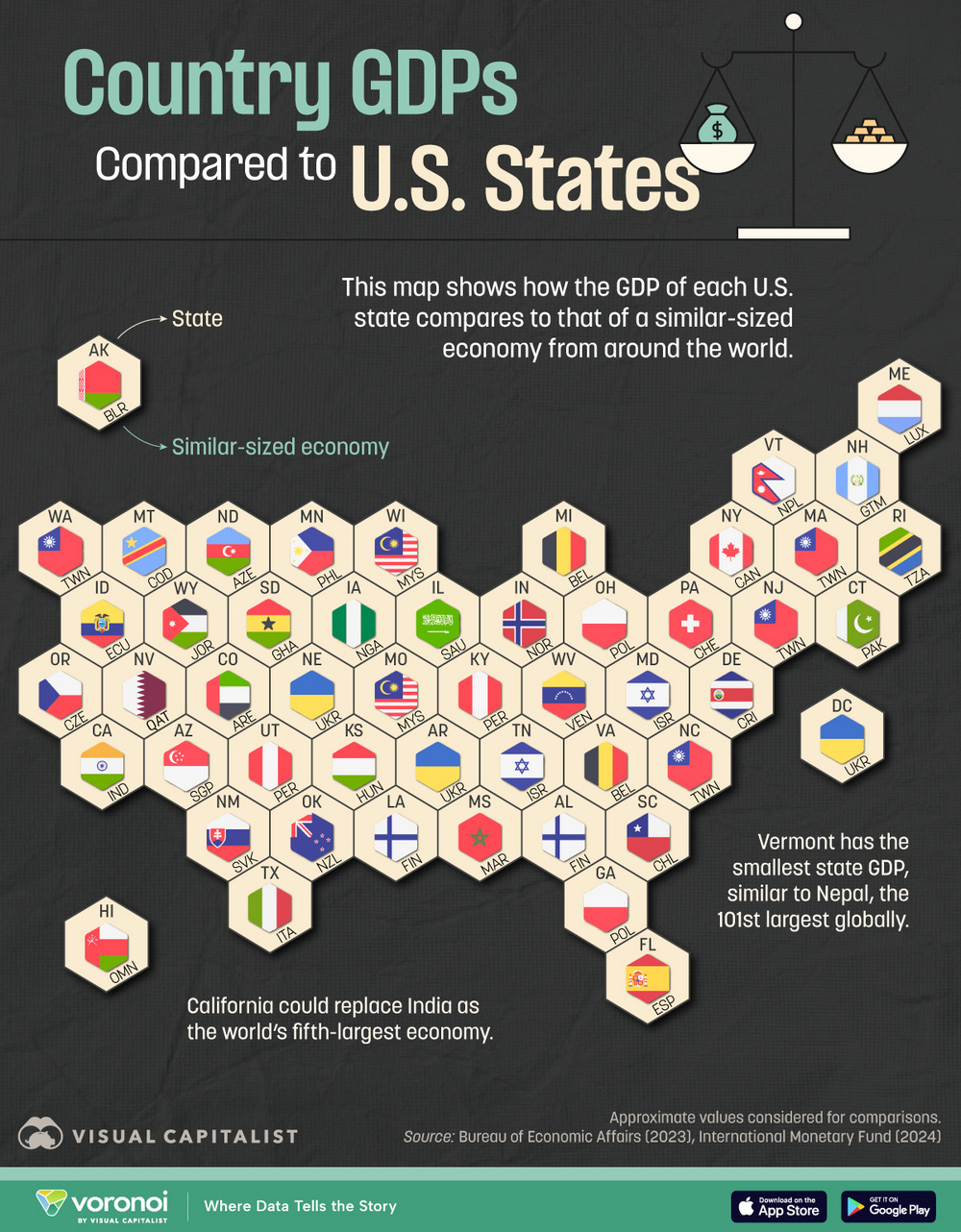If the United States Collapsed Like the Soviet Union
The breakup of the Soviet Union in 1991 was a defining moment of the 20th century, dismantling a superpower and creating 15 independent nations. For Moscow, this meant losing nearly half of its population and over a third of its economic output overnight. But what if something similar happened to the United States? A captivating map by Marko Jukic envisions this hypothetical scenario, imagining how the U.S. might fragment if it faced comparable losses in population and GDP.
A Nation Reimagined
Jukic’s map divides the U.S. into regions named after and proportionally modeled on the former Soviet republics, each reflecting a slice of America’s population and economy:
- Oredova (Moldova): Oregon stands in for Moldova, with 1.5% of the U.S. population and 1.3% of GDP.
- Calikraine (Ukraine): California, Nevada, and Arizona transform into “Calikraine,” representing 18% of the population and 16.2% of GDP.
- Ohiorus (Belarus): Ohio becomes “Ohiorus,” a nod to Belarus, contributing 3.6% of the population and 4% of GDP.
The map’s treatment of the southern and central states draws parallels to Central Asia:
- Arkanstan (Kyrgyzstan), Missibamastan (Uzbekistan), Georgiastan (Tajikistan), South Carolinastan (Turkmenistan), and Floridastan (Kazakhstan) collectively represent 17.2% of the population and 10% of GDP.
The rest of the U.S., labeled as the American Federation, is shaded gray and retains a population of 170 million, “less than Pakistan,” with a GDP of $14 trillion, making it second only to China.

Lessons from the Soviet Collapse
The map provokes comparisons to the dramatic geopolitical shifts of the early 1990s. When the Soviet Union disbanded, its new states faced severe economic turmoil. Ukraine, for instance, experienced a 60% economic contraction in the 1990s, despite being one of the USSR’s industrial powerhouses.
Meanwhile, the Baltic states—modeled on the map as Estmont (Estonia), Lathishire (Latvia), and Massathuania (Lithuania)—took a different path. While grappling with their own post-Soviet challenges, they quickly integrated into Western institutions like NATO and the EU.
Could the U.S. Fragment in a Similar Way?
While the U.S. differs significantly from the Soviet Union in governance and economic structure, the map raises compelling questions about national unity. Regional divisions, economic disparities, and political polarization are often cited as vulnerabilities in maintaining cohesion.
Jukic’s “American Federation” reflects the potential economic and demographic decline a fragmented U.S. might face. At 170 million people, this hypothetical entity would rank below Pakistan in population and significantly trail China’s economic might—an unthinkable scenario for a current global superpower.
Why This Map Resonates
The map’s playful but insightful design challenges viewers to consider the fragility of large, complex nations. By linking history to a contemporary context, it emphasizes how rapidly geopolitical landscapes can change.
Vladimir Putin famously described the USSR’s collapse as “the greatest geopolitical catastrophe of the 20th century”. His nostalgia for Soviet-era influence has driven policies aimed at reasserting Russian dominance over former Soviet republics. However, this has come at a steep cost.
Russia’s interventionist policies, such as the annexation of Crimea in 2014 and the ongoing war in Ukraine, have led to severe economic sanctions, diplomatic isolation, and immense human and material losses. According to the Carnegie Endowment for International Peace, instead of strengthening Russia, these actions have left the country grappling with stagnation and a brain drain as citizens and businesses flee uncertainty.
While Putin’s vision for a revived Soviet sphere of influence remains far from realized, his attempts have had lasting consequences for both Russia and the broader global order. This underscores how efforts to reconstruct historical empires often exacerbate, rather than resolve, national crises.
What do you think of this scenario? Could such a breakup ever happen? Share your thoughts in the comments below!








